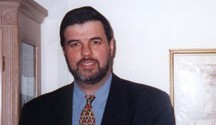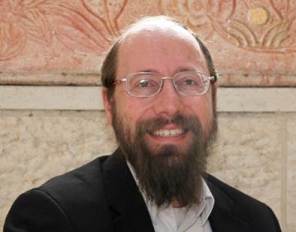Beit Midrash
- Sections
- Chemdat Yamim
- Igrot Hare’aya
Recipient: Rav Yitzchak Aizik Halevi, the author of a monumental history of rabbinic scholarship, Dorot Harishonim. See Rav Kook’s letter to him (#99).
Body: [In the first installment, we saw Rav Kook’s warm words of thanks and excitement over receiving the Dorot Harishonim and his beginning of the topic of the connection between aggada (the moral and philosophical elements of Torah) and Halacha, including that they stem from prophecy and wisdom, respectively.]

Igrot Hare’aya (200)
Beit Din Eretz Hemda - Gazit
77 - Connecting Disciplines in Torah Study
78 - Connecting Disciplines in Torah Study
79 - Connecting Disciplines in Torah Study
Load More
This is also the implication of the gemara (Zevachim 62a) that three prophets who came to Eretz Yisrael at the beginning of the Second Commonwealth provided information about the details of the operation of the Second Temple. There were certainly also scholars who moved to Eretz Yisrael at that time, but apparently certain matters required specifically the power of prophecy. Even if we accept that the final decision in a halachic matter is not determined by means of prophecy, it still has an impact on the process of the studies.
Certainly, in Eretz Yisrael, which is the place of prophecy, the flow of prophecy makes an impression on the study of Halacha. The matter is understood based on the internal look at the matter, without the need for great investigation. The Rabbis tell us that "the air of Eretz Yisrael makes people wiser" (Bava Batra 158b) and that study in Bavel could confuse what otherwise could be accomplished in Eretz Yisrael (see Bava Metzia 85a). The wisdom of prophecy, which is the foundation of the wisdom of aggada, the internal element of the root of the Torah, was much more active in Eretz Yisrael than in the Diaspora, which is not a suitable place for prophecy (see Moed Katan 25a).
Those people who are influenced by the roots of the wisdom of prophecy consider brevity a desired value. For them, the analysis of the halachot and the manner in which one matter is arrived at through another is done with a very broad survey of the topic. It is enough for them to have a small hint, and they already arrive at a ruling. That is the way the Jerusalem Talmud was studied, as those who merited to benefit from its divine light were able to suffice with short derivations before arriving at the practical halacha. Those who took part in the Babylonian Talmud, who were not likewise privy to the roots of prophecy, required much more long-winded discussion before arriving at a conclusion.

Maintaining a Friendship of the Spirit – #266 – part III
Igrot Hare’aya – Letters of Rav Kook; Date and Place: 11 Shevat 5670, Yafo
Beit Din Eretz Hemda - Gazit | Elul 5784

Excerpts of Letter on Shemitta – #289 – part I
Date and Place: 6 Nisan 5670 (1910), Yafo
Beit Din Eretz Hemda - Gazit | Tevet 5785

False Accusation of Non-Kosher Soap – #333
Date and Place: Yafo, 5 Nisan 5670 (1910)
Beit Din Eretz Hemda - Gazit | Tammuz 5785

Refuting Criticism by the Ridbaz – #311 – part II
Date and Place: 19 Sivan 5670 (1910), Yafo
Beit Din Eretz Hemda - Gazit | Adar 5785

Beit Din Eretz Hemda - Gazit

Interceding Regarding a Will
Igrot Hare’aya – Letters of Rav Kook #105
Sivan 28 5782

Profits from Formerly Joint Swimming Pool – part
(based on ruling 81110 of the Eretz Hemdah-Gazit Rabbinical Courts)
19 Sivan 5784

Limits of Interest Rate for Loan with Heter Iska – part I
based on ruling 80033 of the Eretz Hemdah-Gazit Rabbinical Courts
Sivan 8 5782






















